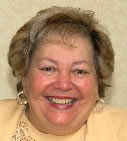  
|
(The Other Woman)
Marjorie Gottlieb Wolfe

Syosset, New York
  
|

Shakespeare said, "The course of true love never did run smooth."
Some of the words associated with extramarital affairs are illicit, secretive, and immoral. And as the "other" woman and men involved in these relationships know, they can be very "elnt" (lonely).
Why there's even a website dealing with the problem stated above. It's named TOW--The Other Woman.
In 1992, there was a movie titled, "The Other Woman," starring Adrian Zmed, Lee Anne Beaman, Juliet Reagh, Daniel Moriarty, and Craig Stepp. The drama is about a news reporter whose marriage ("khasene") is falling apart. While investigating a murder, she discovers a compromising "fotografye' (photograph) of her husband. She confronts the woman who she thinks is having an affair with her husband and finds herself falling in love. As the say in Yiddish, "Gehakte tsores" (utter misery/chopped-up troubles).
In 1995, "The Other Woman" (also known as Mothers and Daughters) is a made-for- TV movie that follows dying mother Tessa Bryan's attempts to gain acceptance of her two young daughters, Lara and Kate, of her husband's second wife, Carolyn. To do so, she takes them on a trip around the country to their father's ranch. It stars Lloyd Bridges, Laura Leighton, and James Reed.
And now, in 2011, Natalie Portman stars in "The Other Woman." The synopsis: Portman plays an office assistant who has an affair.
Dana Stevens ("Slate") writes, "Emilia is the second wife of a much older, well-off Manhattan lawyer, Jack (Scott Cohen.)" Shortly before the movie begins, "di por" (the couple) loses their first child, a 3-day- old "meydl" (girl).
Emilia is reluctant to move on with her "lebn" (life) and appears to be uninterested in connecting with Jack's 9-year-old "zun" (son). Emilie's apartment is still cluttered with the never-used "beybi" gear.
Stevens states that "Emilia is not only a bereaved and suffering mother; she's a something of a bitch, prone to diminishing the pain of others and magnifying her own. She's also a responsibility shirker with a knack for apologizing in the passive voice."
And, finally, my favorite story about "the other woman" comes from the late Gertrude Berg (1898-1966).
As a kid, Berg created a character named Maltke Talnitzky, who later morphed into Molly Goldberg. Maltke was in her 50s, with an inferiority complex, and had a husband who was "nisht git"--no good.
Her first attempt writing about Maltke is titled, "The Other Woman. When Maltke's husband wants to leave her, Molly pleads her case in court against the other woman.
She says, "My face is not on top of such a long neck, but
it's a face." (She's saying,
"It's a ponem, not a sheyn ponem.")
No. So the legs are a little short. The knees
maybe knock a little, but who listens? There's a few lumps here
and there and the
waist is ay, ay, and the dishwasher eats off
the nail polish...but whose fault is that? Did
I ask for what I look like? I'm a woman, plain everyday woman,
and you think my
husband is such a beau brummel he needs
something better? He doesn't, believe me.
For the kind of man he is, I'm good enough." (In other
words, he's not such a metsie"--bargain.)
--------------------------------------------
Source: "Something on My Own - Gertrude
Berg and American Broadcasting, 1929-1956" by Glenn D. Smith,
Jr. (Syracuse
University Press).
| A | B | C | D | E | F | G | H | I | J | K | L | M |
| N | O | P | Q | R | S | T | U | V | W | Y | Z |


| Yiddish
Stuff Jewish Humor Schmooze News More Majorie Wolfe |
Principle Jewish Stories All Things Jewish Jewish Communities of the World |